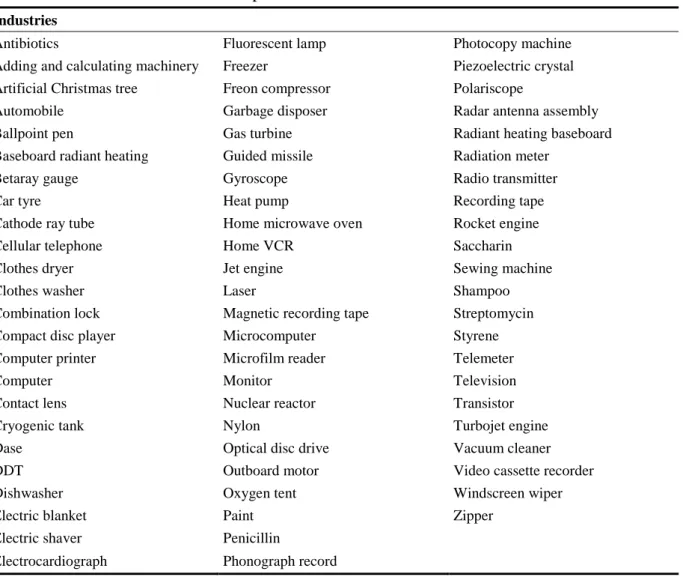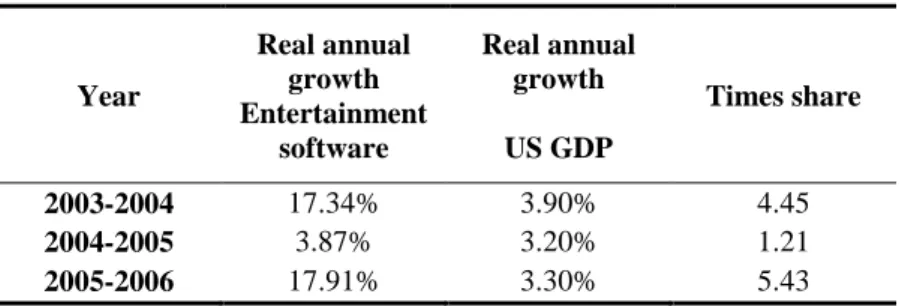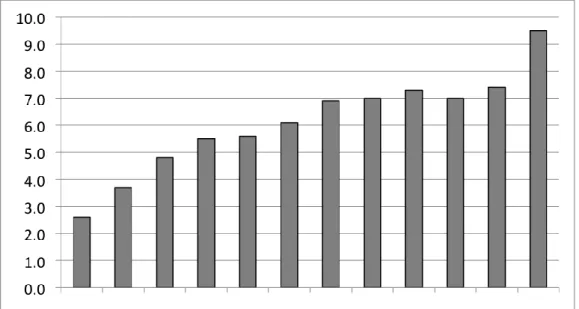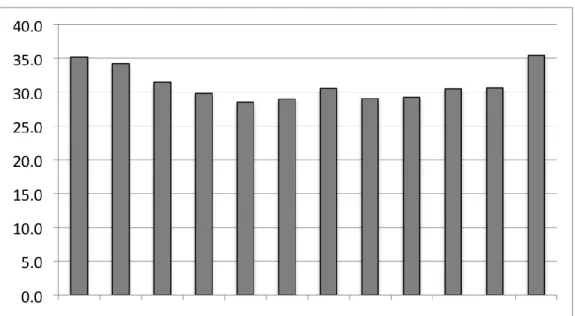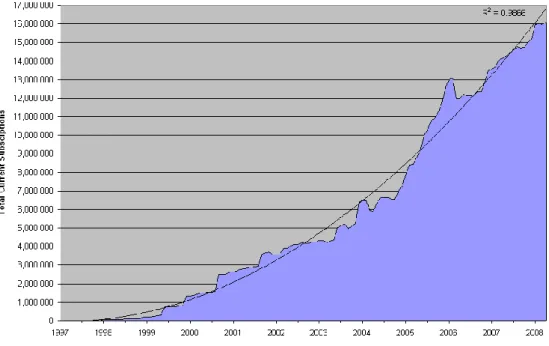The first investigates the evolution of the gaming industry with standard industry life cycle tools. The correspondences and deviations between industry life cycle theory and empirical observations on the gaming industry are a central interest of the present study.
Basics
The second focal indicator of an industry's maturation process is the emergence of the dominant design. Before the emergence of the dominant design, many companies come in with different product variants.
Changes in innovative behaviour
Dominant design
Tushman and Anderson (1986) call dominant design a roadmap that ends the period of technological ferment. The concept of dominant design is then elaborated based on the idea of design hierarchy.
Regimes
Abernathy and Clark's (1985) categorization is based on the premise that different types of innovative activity are needed at different stages of the life cycle. Thus, Clark's (1985) paper follows the logic of Abernathy and Clark's (1985) paper with two dimensions.
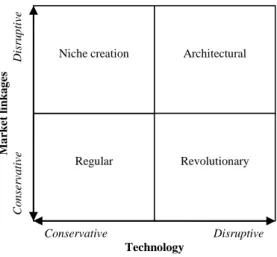
Changes in industry composition
Entries and exits
Increased entry in the early stages of the industry life cycle goes hand in hand with increased sales that depend on quality improvements and price reductions. They interpret this to support their thesis that early in the industry's life cycle demand changes due to non-price factors.
Survival
1998), on the other hand, found that management choice rather than environmental factors determined survival in the disk drive industry. However, Bayus and Agarwal (2007) found that the advantage shifts from the alio entrants to de novo entrants in the later stages of the life cycle.
Empirical backing
Variables
Changes in the efficiency of the production process have also been assessed on the basis of labor productivity (eg Klepper 1997). Mazzucato (2002) argues that the changes in market shares between firms more accurately reflect the dynamic growth of the industry than absolute growth rates.
Contexts
These studies have shown that the aging patterns predicted by industry life cycle theory apply to a wide variety of industries. The same applies to Internet start-ups (Goldfarb et al. 2007) and mobile telecommunications (Kim and Park 2006;.
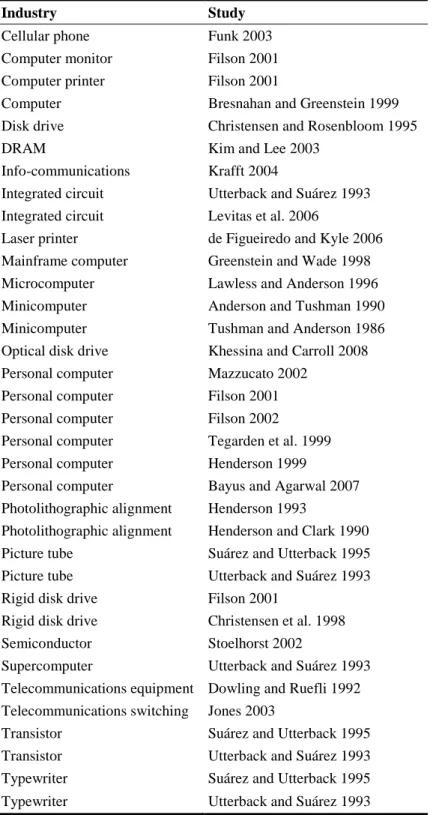
Limitations
Applicability of and exceptions to the theory
On the other hand, the acceleration of aging patterns predicted by the industry life cycle theory is proposed by some due to the transition to high technology (e.g. they classify violations of the industry life cycle model into suitability violations and violations of increasing returns.
Micromechanisms
The birth of an industry therefore shows community dynamics that are important for the take-off of the industry life cycle. Wade (1995) calls for research on a broad set of community links and concludes that research at the community level of analysis can increase our understanding of the industry life cycle.
Inter-industry effects
Whether the evolution of this particular industry follows the propositions of the industrial life cycle theory will be investigated. These research streams contribute the most to the study of the industrial life cycle of the creative or cultural industries in general and the gaming industry in particular.
Origins and definitions
- Cultural industries defined
- What makes industries cultural?
- Creative industries defined
- Which sectors belong to cultural or creative industries?
The origin of the concept of creative industries is very different from that of cultural industries. Why the concept of cultural industries was not adopted instead of the concept of creative industries.
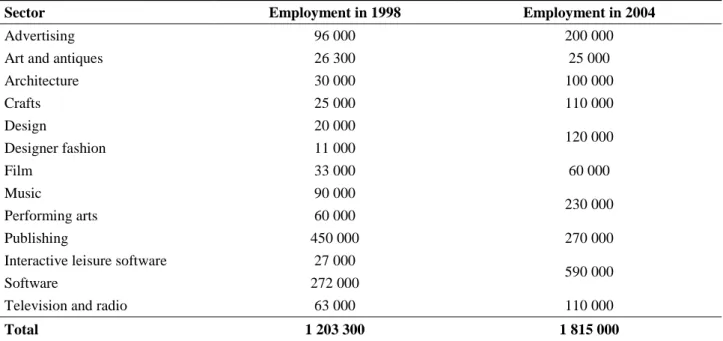
Economic characteristics
- Monopolistic competition and horizontal differentiation
- Hits, misses and increasing returns
- Gatekeepers
- Experience goods and taste formation
- Spatial clustering in urban areas
The characteristics of cultural and creative industry successes have been empirically studied mainly in music and film. Most of the research done on the film industry from the perspective of hits and misses has been done by De Vany and associates. Henriques and Thiel (2000) argue that the clustering of cultural industries cannot be explained simply by city size.
Management issues
Art for art‟s sake and art for profit
The idea of the tension between the economic sphere and the arts can be traced back to Weberian sociology (Swedberg 2006). Although the field of tension between the artistic and economic logic of the cultural and creative industries is widely recognized, empirical research on it is scarce. Autier and Picq's (2005) study of the evolution of game development companies revealed an interesting paradox.
Managers and creators
In addition to the general high intensity of the creation of novelty within the cultural and creative domain, particular management issues have been identified. This means that the stylistic direction forms in the interaction of the producer and the executives. The responses identified in the literature to the unique management challenges brought about by the high intensity of innovation creation include providing boundaries for creativity, creating an infrastructure, organizing work in short-term projects and managing by through negotiations and mediation.
Creative labour
These characteristics of the labor market raise the question of why so many people are willing to enter the market and continue to increase the excess labor supply. Thus, in the cultural and creative domain, work should not be taken simply as useless (Caves 2003, p. 74), but the content of work should be seen as part of its compensation. This seemed surprising as it is very different from the employment practices of the film industry4, which are believed to be very similar.
Industry dynamics
- The interconnected industry system
- Majors and independents
- Flexible specialisation
- The relationship of concentration and diversity
- Different kinds of innovations
The lack of capital in the cultural and creative industries limits the damage caused by the process of peddling. In the film industry, independent films have historically served the role of filling the capacity of major motion pictures. The viability of independents is a key concern in many studies of large and independent.
Research questions
The literature on cultural and creative industries emphasizes non-utilitarianism and horizontal product differentiation. A review of the literature on cultural and creative industries suggests what to expect. In this way, observations of industry dynamics can be explained by the micro-mechanisms that produce them.
Data and methods for understanding industry dynamics
Thus, rather than the actual entry and exit times of the firms, the analysis is based on the introduction of the first device by the firm (entry) and the emergence of the first generation in which the firm does not introduce any devices (exit). This is done using the Herfindahl index and the four-firm concentration index. It is the sum of the squares of the market shares of firms that populate the market.
Data and methods for understanding micromechanisms
The sample used in the second stage of this study is limited to Finnish companies. In this study, the aim of the model building exercise was to trace causes and effects. Second, the relationships between the variables were identified on the basis of the sorted data.
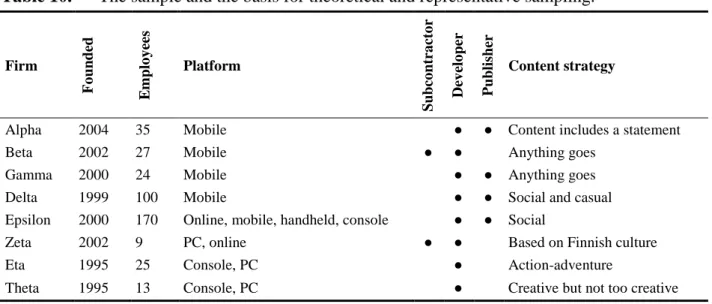
The history and dynamics of the games industry internationally
The introduction of electronic games
After evaluating the concentration level of the game development sector, the changes in the ability of the game market to absorb new entrants are tracked. Such analyzes allow us to determine correspondences and deviations between the industry life cycle theory and the evolution of the game industry. This machine was introduced in the USA in late 1971 and was called the Magnavox Odyssey.
Industry formation
Console manufacturers quickly realized that the profit potential was in games and not in the consoles. According to Grantham and Kaplinsky (2005, p. 190), the dominance of the console manufacturers changed in the 2000s to the dominance of the publishers. South Korea is a newer game development country that has become a strong player in the international market.
Market structure
The variation in the population is large as those who consider themselves heavy gamers own an average of 67 games. The website mmogchart.com charts the growth in the number of active online game subscriptions. Growth in the number of active, massively multiplayer online game subscriptions (extracted from mmogchart.com).
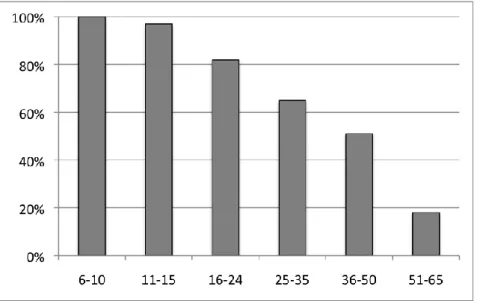
Innovation and competition in hardware
- First generation 1972-1977
- Second generation 1977-1983
- Third generation 1983-1989
- Fourth generation 1987-1994
- Fifth generation 1993-1997
- Sixth generation 1998-2004
- Seventh generation 2004 ->
- Generational overview
One of Sega's strengths was that Electronic Arts was making games for the Genesis (DeMaria and Wilson 2004, p. 248). It was launched in 1998 in Japan and a year later in the rest of the world. This is due to the rise of handheld devices, where cartridges continued to be a popular storage medium.
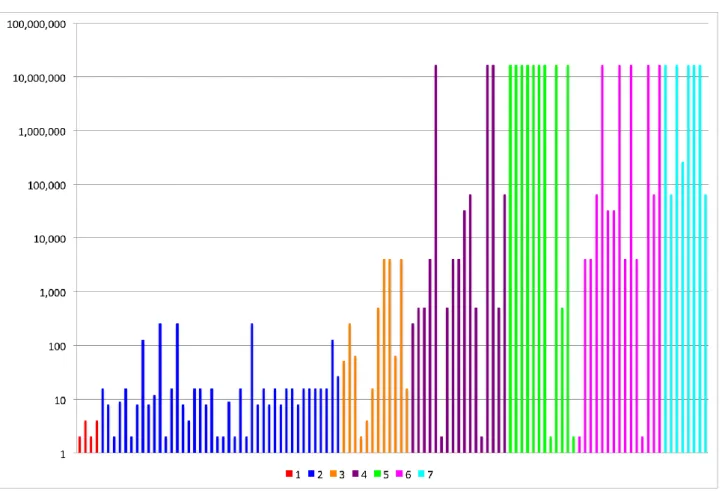
Innovations in software
Era of ferment?
Another early mainframe game was ADVENT, also known as Colossal Cave Adventure, which was developed by two computer science students at Stanford University using the university's mainframe. Unsophisticated graphics hampered both game environment creation and character development. In addition, the primitive hardware level imposed limitations on the size of the game programs in terms of the number of lines of code that determined the number of different types of events in the game.
Technological innovations
The development of graphics was very much tied to the capabilities of the hardware. The development of graphics capabilities came along with the use of CDs as a storage medium for games. Of the 51 technological software innovations shown in the figure, 19 occurred simultaneously with the introduction of a new generation of hardware, and 31 occurred at a different time.
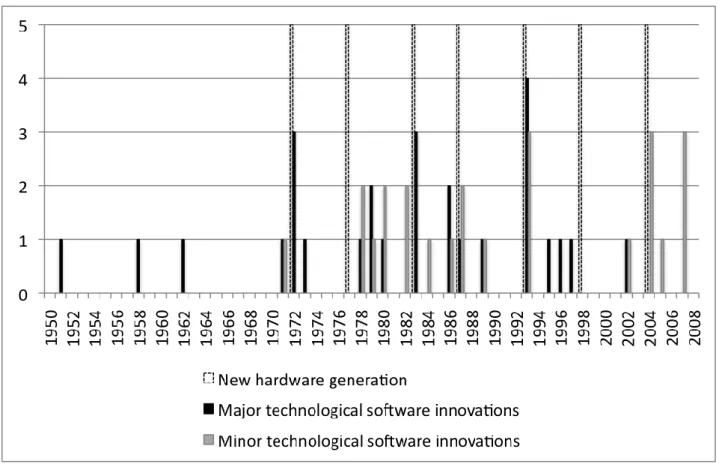
Stylistic innovations
- Strategy
- Sports
- Shooting
- Simulation
- Adventure
- Role-playing
- Platform
- Puzzle
- Driving
- Edutainment
- Music and rhythm
- New candidates
- Other stylistic innovations
- The pattern
Another pioneer of the strategy genre was Empire, which was released on the PLATO network in 1972. The object of the game is to repeat a sequence of sounds with the correct timing. Only those genre innovations that occurred after the introduction of the first generation of home gaming devices in 1972 are included in the calculations.
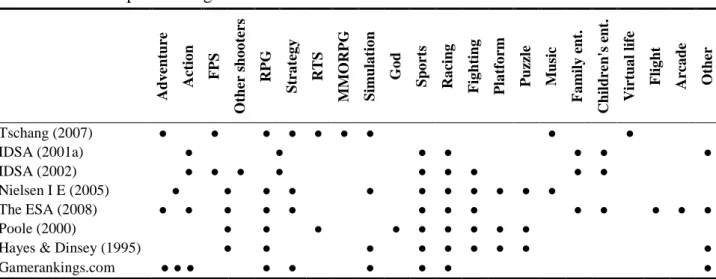
Industry concentration in game development
The consolidation of the industry has been noted by trade associations and, particularly in the UK, this is seen as a threat. Figures 19 and 20 show the sales of the top 100 development studios for 2007 and 2006, respectively, to give a picture of the structure of the game development industry. in Great Britain, GBP is thus used as currency. This was calculated by adding up the sales of the top 100 studios and comparing them to total UK sales.

Industry evolution in Finland
Entries, exits and firm numbers in the Finnish games industry
According to Koivunen (ibid.) the Finnish gaming industry has grown rapidly since 2000 and up to 90 percent of sales are exports. The same cannot be said for the number of people employed by gaming firms. The bursting of the 2000 bubble is visible in firm sizes based on number of employees.
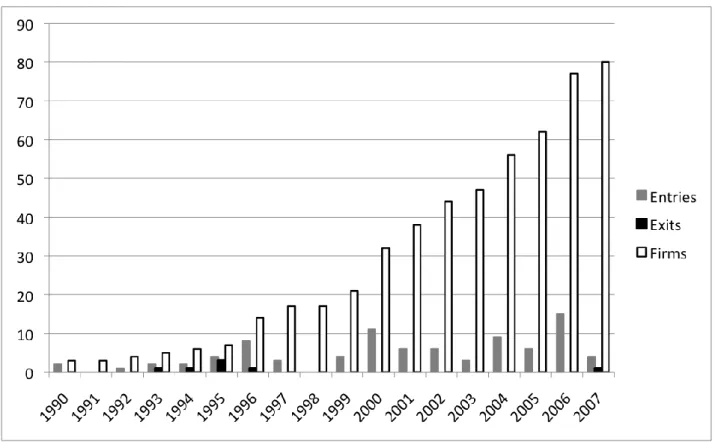
Opportunities and challenges for the games industry in Finland
This suggests that the international games industry's ability to absorb new entrants and their products has not diminished. On the one hand, Koivunen (2004, p. 85) argues that the strength of the games industry in Finland is the ability of the Finnish education system to produce up-to-date competence. In the Finish Game Companies 06 report, it is stated that the rise of the games industry in Finland is not a coincidence, but a result of continuous investment in the sector (Neogames 2006, p. 8).

Summary of findings
What kinds of innovation patterns in hardware (technological) and software (technological and stylistic) can be detected in the history of the gaming industry. This is done by constructing a qualitative system dynamics model of the micro-mechanisms in the game development sector based on interview data from game development managers. Before the system dynamics model of the micro-mechanisms of the game development sector is built, previous models describing the game industry are reviewed.
Prior models of games industry micromechanisms
A good example of this is Aoyama and Izushi's (2003) model (Figure 27) which traces the steps of the game development process from planning and design to debugging. The only system dynamics model so far that depicts the dynamics of the games industry is that by Tschang (2007) which is presented in Figure 29. The purpose of the modeling exercise here is to include the interactions between developers and publishers as well as between developers themselves.
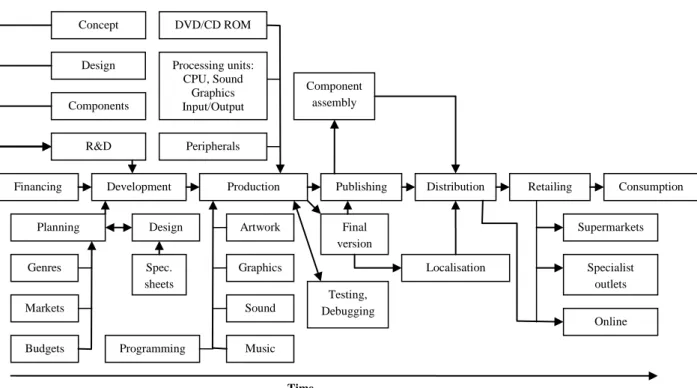
Gatekeepers in action
- Selection imposed by developers
- Selection imposed by publishers
- Selection imposed by consumers
- Three rounds of selection
- Scarce resources
- Model of the selection process
These are both linked to the innovation processes of the development companies as well as to the way in which the market for games takes shape. Like you can show the idea and how it runs on a screen and you have a minute of the game done. The main differences are that the operators do not invest in the development of the game and that mobile publishers negotiate agreements with several operators to reach a larger customer base.
Emergence of demand
Allocation of market shares
Efficiency and quality as competitive weapons
Model of the emergence of demand
Entrants and innovations
The birth of new firms
The innovation process
The roles of management and employees
Model of new firm formation and the innovation process
Knowledge and information exchange among developers
Creation of critical mass on a national scale
Group selection enforced by the institutional setting and competing industries
Collective search
Model of the exchange of information
A qualitative model of games industry micromechanisms
Summary
Contributions to the games industry literature
Contributions to the cultural industries literature
Contributions to the industry life-cycle literature
Methodological implications
Limitations of the study and topics for further research
Implications for policy-making and management practice
Classification of cultural industries literature
Interview questions
